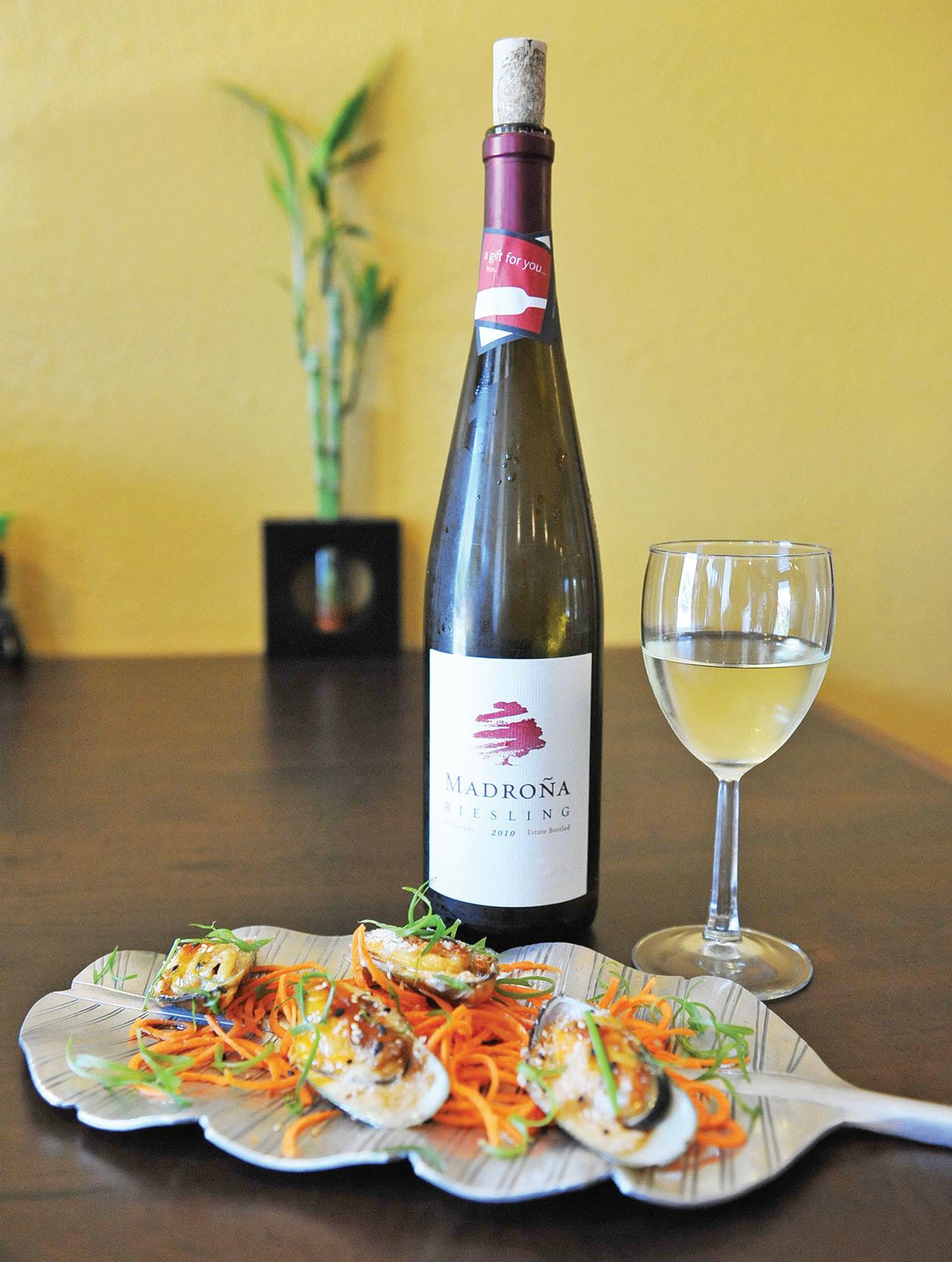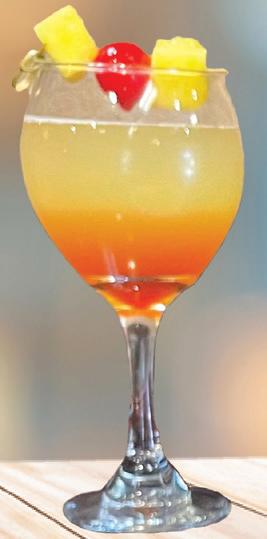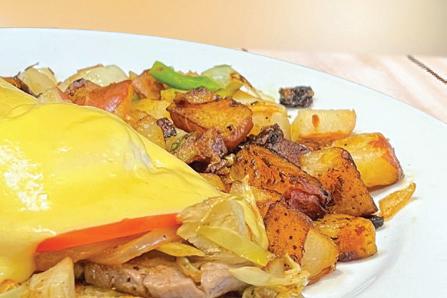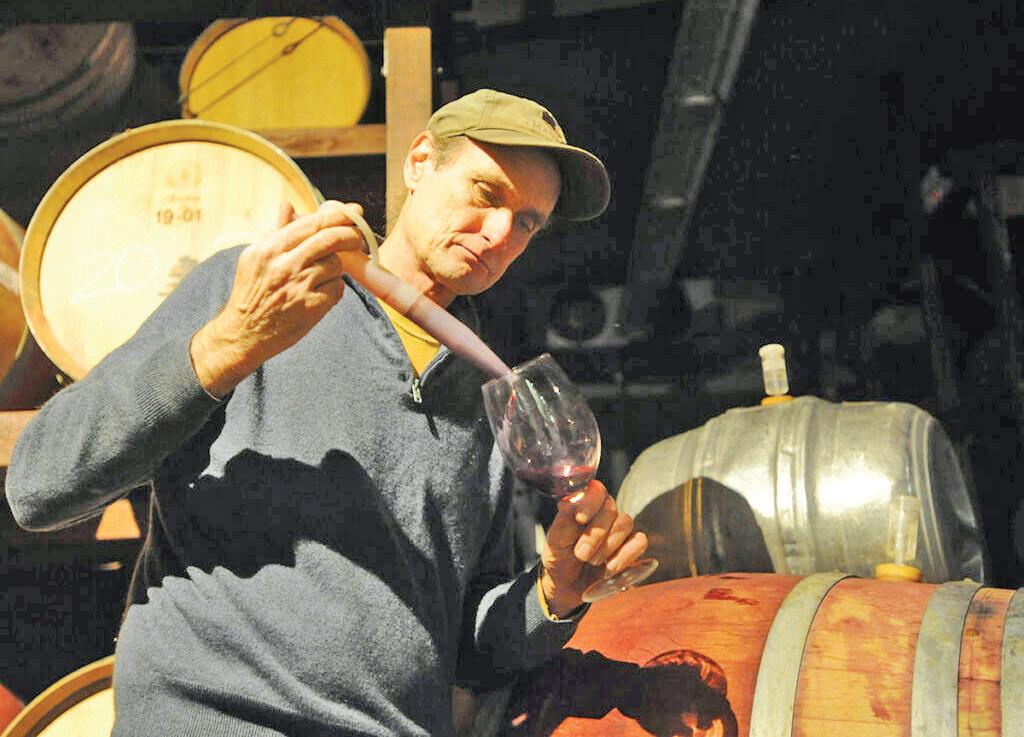
2 minute read
From vine to glass

Madroña Vineyards’ village gets it done
Mimi Escabar Special Sections Editor
It takes a village to make things happen. In the case of Madroña Vineyards it took a village of family, friends and community to establish the winery.


The late Dick Bush and wife Leslie bought part of the Dart Ranch in Camino in 1973.
The 52-acre parcel was purchased with partners Bill and Shirley Brooks.
Dick, an engineer, and Leslie, a teacher, had not planned to develop a premier vineyard and winery but the stars aligned in a fortuitous way to produce a 50-year success story. The couple planned to buy property in the Camino area to build a house and have an acre or two for their family. Sometimes plans change — and did they ever change for the Bush family.
“We were looking for an acre at first for our home. We were living in Placerville and just wanted a little more room,” Leslie said. “We looked at other properties but this one was available so we bought it.”

Planting a vineyard, growing wine grapes and eventually opening a winery was not initially on the agenda. However the land presented a compelling canvas to grow something. It had been used for grazing and was relatively flat and not too rocky. It also was home to a beautiful madrone tree.
Then Ag Commissioner Edio Delfino and University of California, Davis, Ag Adviser Dick Bethell suggested to
Dick that it might be a good idea to plant an experimental acre of wine grapes to see how they would do at such a high elevation.
Dick, with a doctorate in metallurgical engineering from Stanford, put on his practical and analytical hat and mapped out a vineyard.

“Dad was adventurous and had a business mind so planting just an acre didn’t fit in his thinking,” son and now winery proprietor Paul Bush said.

What grapes to plant became the next challenge. In 1973 California was emerging as a good place to grow wine grapes and there was a big demand for rootstock resistant to phylloxera, a bug that lives in the soil and can destroy a vineyard.
The lack of resistant rootstock did not deter Dick. “We had some Thompson seedless grapes growing on the property. My dad pulled a few of the old vines and had them tested. They showed no sign of phylloxera so it was decided to plant clean, young grapevines,” Paul said. Chardonnay, riesling, merlot, cabernet sauvignon and zinfandel — all popular at the time — were planted.
A gerwurztraminer was planted later and cabernet franc was grafted into part of the zinfandel in 1983.
“The planting became a community event with our partners, family and friends all helping,” said Leslie. “It really took a village to get it done. At the end we had a big barbecue and it was fun.”
More adventures
With more than half the vineyard planted Dick and Leslie and their children — Paul, 7; Carolyn, 9; Diane, 13; and David, 15 — embarked on another journey. The adventurous couple went to Zaire (formerly the Democratic Republic of the Congo) to teach at the American School of Kinshasa for two years.
During the two year hiatus the Brooks managed the property and vineyard with continued help from the community.
Upon returning in

1975, Dick and his family went to work with everyone else now invested in the vines. Even with all activity around the vineyard the thought of developing a winery was not at the forefront.
“When the fruit started ripening in 1977, my dad would take the small harvest to Greg Boeger at Boeger Winery down the road,” Paul said. “Greg mentored my dad on winemaking and helped with many aspects around the vineyard.”
In 1978 Dick decided to process the crop again using the knowledge and facilities at Boeger.










